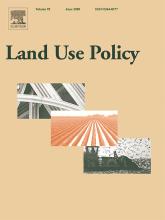Resource information
Land use and land cover change (LULCC) affects the climate through both biogeochemical (BGC) and biophysical (BPH) mechanisms. While BGC effects are assessed at global scale and are at the heart of climate treaties such as the Paris Agreement, BPH effects are totally absent despite their increasingly recognized impact, especially at local scale. This stems from the complexity in characterizing their climate impacts both at local and global scale, which makes it impractical to offer clear advices for the development of climate policies. To overcome this barrier, we built a prototype for an assessment tool to evaluate the local BPH impact of a series of land cover transitions. It relies on a dedicated methodology, based on satellite remote sensing data, that can estimate the local change in near surface air temperature associated with BPH effects of potential LULCC. This tool follows a tiered methodological approach, using transparent methods and mirroring what is currently provided by the IPCC to estimate the BGC effects, i.e. through different levels of increasing methodological complexity, from Tier 1 (i.e. default method and factors) to Tier 2 (i.e. similar to Tier 1 but with higher level of details and complexity) and Tier 3 (i.e. tailored solution to address national circumstances). The prototype tool enables the evaluation of the local impacts of land-related BPH effects, therefore facilitating a scientifically informed and comprehensive assessment of land-based climate policies.


